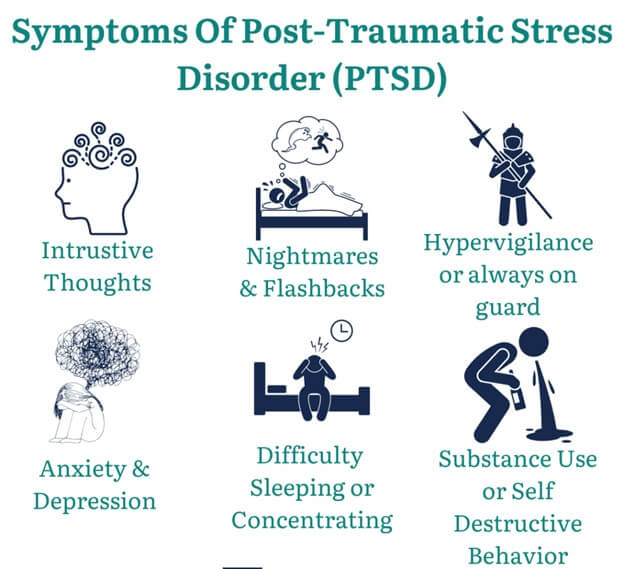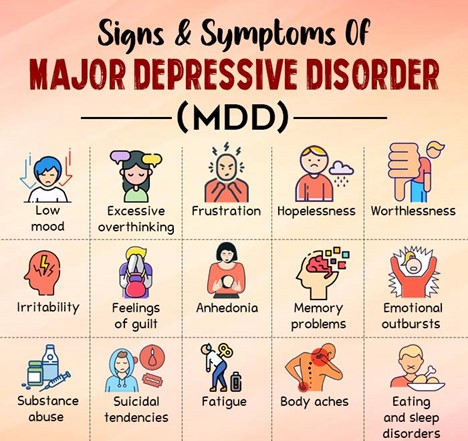A nurse is caring for a client who was involved in heavy combat and observed war casualties. The nurse should suspect that the client is suffering from posttraumatic stress disorder (PTSD) if the client makes which of the following statements?
"My child was born with a birth defect due to an exposure I had overseas."
I check any room I enter because the enemy is still after me and could be hiding anywhere."
"In my dreams, all I can see are the wounded reaching out and trying to grab me."
"I killed four enemy soldiers with my bare hands and saved my entire battalion."
The Correct Answer is C
A) "My child was born with a birth defect due to an exposure I had overseas."
This statement does not directly relate to the core symptoms of PTSD. While exposure to trauma can have a variety of consequences, including potential exposure-related health issues, this statement does not necessarily indicate the re-experiencing, avoidance, or hyperarousal symptoms characteristic of PTSD.
B) "I check any room I enter because the enemy is still after me and could be hiding anywhere."
This statement is more indicative of hyperarousal and hypervigilance, which are common symptoms of PTSD. However, it does not explicitly involve re-experiencing the traumatic event through nightmares or intrusive memories, as described in the correct answer.
C) "In my dreams, all I can see are the wounded reaching out and trying to grab me."
Explanation:
The statement "In my dreams, all I can see are the wounded reaching out and trying to grab me" indicates symptoms commonly associated with posttraumatic stress disorder (PTSD). This statement reflects the re-experiencing symptom cluster of PTSD, where individuals may have distressing and intrusive memories, nightmares, or flashbacks related to the traumatic event they experienced. The imagery of wounded individuals trying to grab the person suggests a strong emotional impact and ongoing distress related to the traumatic experience.
D) "I killed four enemy soldiers with my bare hands and saved my entire battalion."
While this statement might reflect exposure to a traumatic event and could contribute to symptoms of PTSD, it is presented in a way that seems more like a narrative of heroic actions rather than a symptom of distress or re-experiencing.

Nursing Test Bank
Naxlex Comprehensive Predictor Exams
Related Questions
Correct Answer is C
Explanation
While offering female assistive personnel for personal hygiene care is one option, it doesn't necessarily address the larger concern of the client's discomfort with a male nurse in her care team. The nurse manager's response should address the client's overall care and interactions.
B) "Your doctor is a man, so it seems like this should not be a problem."
Comparing the client's situation to the gender of the doctor might not be perceived as sensitive or supportive. The client's comfort with different members of the care team can vary, and it's important to address her concerns directly.
C) "I can review the assignments and arrange for a female nurse to care for you."
Explanation:
Respecting a patient's preferences and comfort is an important aspect of patient-centered care. If the female client expresses discomfort with a male nurse providing care due to her traumatic experience, it's appropriate for the nurse manager to accommodate her request if feasible. Changing the assignment to ensure that a female nurse provides care respects the client's wishes and helps create a more supportive and comfortable environment.
D) "The nurse assigned to care for you is very capable and cares for other women in this situation."
While it's important to emphasize the capabilities of the nurse, this response does not directly address the client's expressed discomfort with a male nurse. It's crucial to prioritize the client's feelings and concerns in this situation.
Correct Answer is A
Explanation
A."You've been feeling that your life has no meaning."This response reflects active listening and acknowledges the client's emotions. Itreflects the client's feelings and encourages them to express more about their emotions and thoughts. It shows empathy and understanding, which can help build trust and rapport.
B. "You have a great deal to live for" may seem dismissive and does not address the client's current feelings of worthlessness.
C. "It's not unusual for depressed people to feel that way" can come across as minimizing the client's unique experience and does not provide support or encourage further discussion.
D. "Why do you feel you are worthless?" might make the client feel defensive or overwhelmed, and it does not offer the same level of empathy and support as reflecting their feelings would.

Whether you are a student looking to ace your exams or a practicing nurse seeking to enhance your expertise , our nursing education contents will empower you with the confidence and competence to make a difference in the lives of patients and become a respected leader in the healthcare field.
Visit Naxlex, invest in your future and unlock endless possibilities with our unparalleled nursing education contents today
Report Wrong Answer on the Current Question
Do you disagree with the answer? If yes, what is your expected answer? Explain.
Kindly be descriptive with the issue you are facing.
